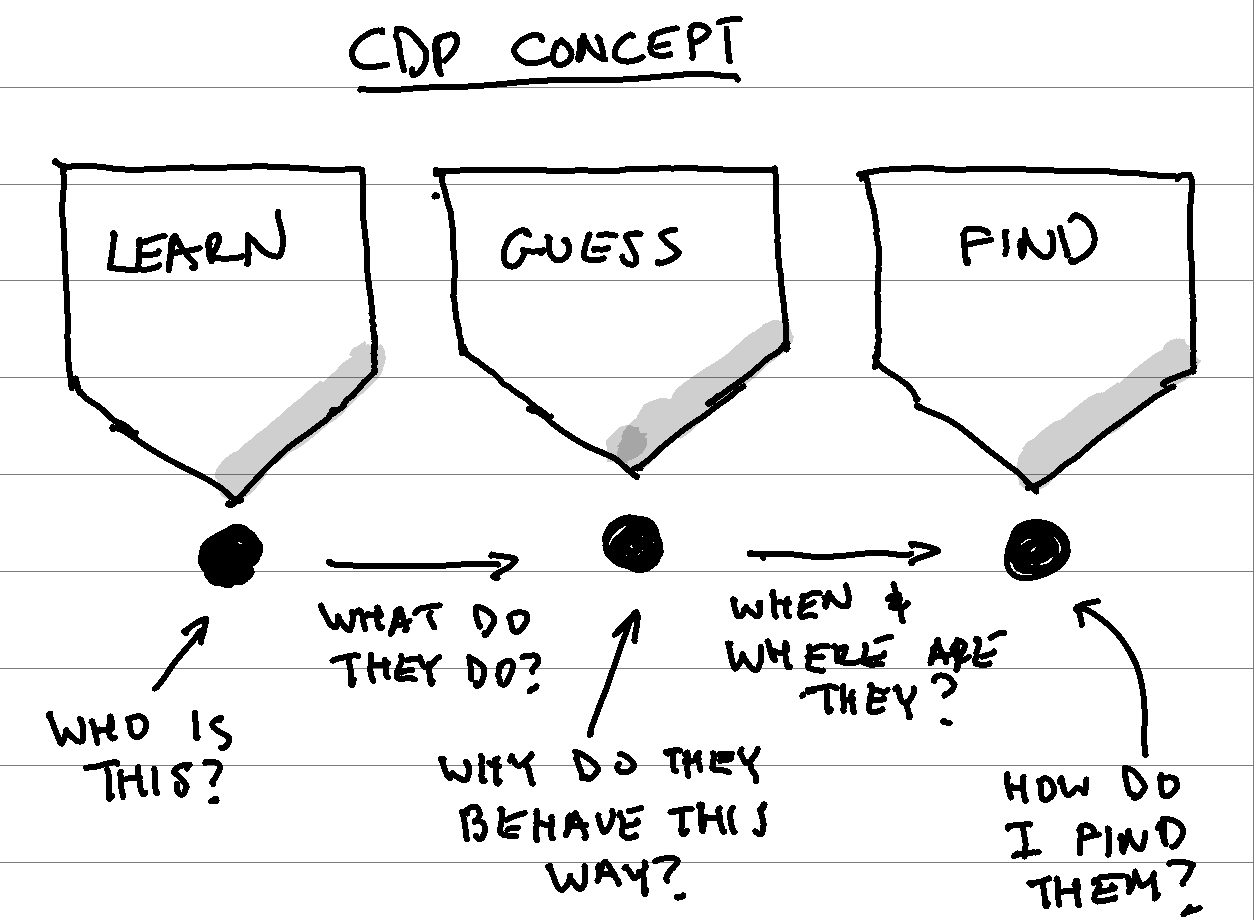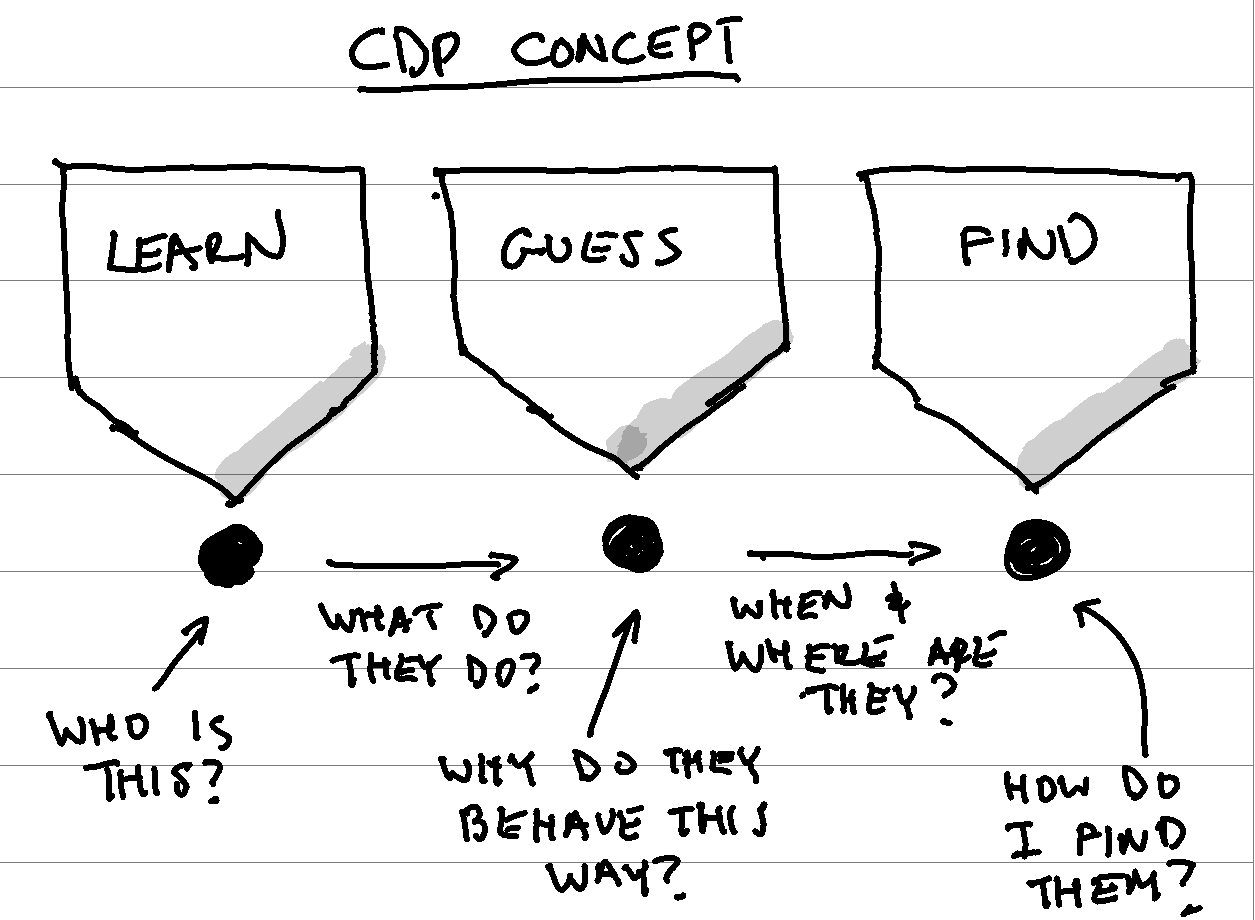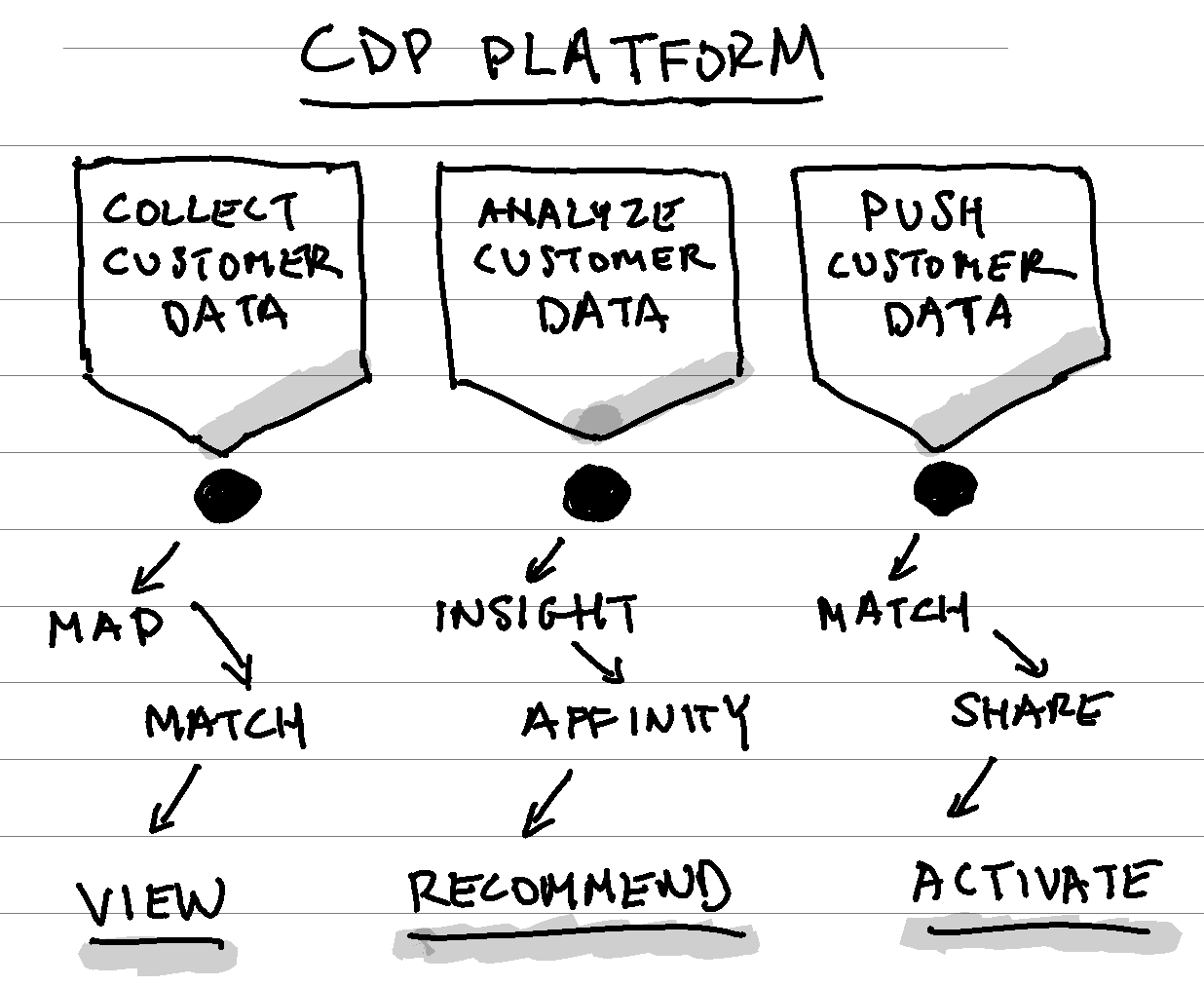CDP Dreams Are Made of Three
Major confusion makes it too easy to choose the wrong type

Major confusion makes it too easy to choose the wrong type
It’s no surprise that customer data platforms (CDPs) both thrill and spook when they come up in conversations. There’s both tremendous opportunity and trepidation to dive into the opportunity that a new martech segment surfaces.
However, with that opportunity comes the introduction to an increasingly crowded marketplace - full of vendor-driven narratives which are rarely neutral in respect to the technology, and especially in fit to your existing tech stack.
You may not even need a CDP.
It’s a relatively simple piece of technology, built on the promise of solving complex problems in the customer data ecosystem. And, there seems to be an endless sea of choices for every use case you could think of.
So, how do you take a major leap forward in your understanding of CDPs, or if you need one?
What you need to know is: there are three different types of CDPs, and choosing the wrong type can set your customer data strategy back by months, or even years. Arm yourself now with knowledge of the three types, and how to choose the right one for your business.
- Expansion-CDP - collection of existing first-party profile data
- Resolution-CDP - compression of owned first-party profile data
- Activation-CDP - generation of new first-party profile data
It’s time for an agnostic and honest look at the market. Here’s how to choose the right type.
A Problem of Abundance
The good news is, this is a problem of plenty. We have lots of good choices and few bad ones.
The bad news - it can be even harder to differentiate and choose, when they all sound good and promise to change your company forever.
What’s worse, vendors will rarely agree to go head-to-head with each other, and long lists of features are giving you a false sense of how well one vendor does one thing or another, or even of what capabilities they’ve had for a few tested years, or just a few days.
In order to understand the CDP Landscape, we need to separate the CDP concept from the CDP platform.
The CDP Concept: Learn, Guess, Find
Let’s first take a look at the CDP concept alone:

The CDP concept is about helping you align the Who, What, When, Where, Why, and How of a person’s data with what you’re trying to do with it. It’s about helping to answer questions like the following:
- Who is this?
- What do they do?
- Why do they behave that way?
- When do they do these things?
- Where are they?
- How do I find them?
If your use cases are simple, data sources are few and clean, and talent is skilled, you could build a CDP yourself and call it a day.
The CDP Platform: Collect, Analyse, Push
Let’s next separate the concept from the CDP platform:

The CDP Platform provides common functions - collect, analyse, push - on your customer data. These functions taken in different combinations allow you to do something with your customer data, like view, recommend, & activate. As you get more sophisticated in each area, you unlock more capabilities.
- Collect:
- Map -> Match -> View
- Analyse:
- Insight -> Affinity -> Recommend
- Push
- Match -> Share -> Activate
The platforms available today can help you automate and scale these functions on your customer data. So - if you’ve got just a simple setup with just a couple of data sources and channels that don’t change, you could build and maintain this yourself.
However, if you’re a business with dozens of data sources and marketing channels, across different countries, regions, time zones, and even regulations - you will need a CDP platform to help you manage all that in one place, and with relatively low effort in the technology.
The Three Types of CDPs
CDPs are all about helping you to learn, then guess about, and then find those customers to deliver personalized experiences. And while there are CDPs which have functions across all of these areas, each CDP vendor is primarily specialized in either growing, summarizing, or using first-party data for your business.
This is majorly driven by what these vendors used to be, before they became CDPs (minus the few who were first generation).
Again, the three major types of CDP are:
- Expansion-CDP
- a collection of existing first-party profile data
- data onboarding, collection from systems, history in data collection and routing;
- Strongest in inbound-outbound data routing with less attention to storing/recording
- Resolution-CDP
- a compression of owned first-party profile data
- resolution of single identity, golden record, insights, ID resolution and history in analysis and ID resolution;
- strongest in analytics and warehousing with less attention to covering the market in integrations in/out
- Activation-CDP
- a generation of new first-party profile data
- history in marketing optimization and customer data rights/privacy;
- strongest in audience modeling and ML with less attention to maintaining as a system of record
Some folks will call the big marketing clouds/suites another type, but they aren’t CDPs you can add to your business independently. You need to also use their other core products, and they don’t integrate freely outside their own walls, a core function of a CDP. So we’ll leave them out for now.
Tomorrow’s features are useless for impact you need now
Consider your business today. The platform will grow with you.
Ask yourself:
- Am I a data rich or data poor company? Do I have too much or too little data?
- What are the major challenges in my vertical when trying to connect with customers?
- Are my consumers digital savvy, or can I help them develop into one?
- Do I have digital products to personalize, or do I need help developing them?
The CDP concept is different from other well-worn phrases attached to CDPs, like the “single customer view,” or “ID resolution.” Those are a couple of features of some CDPs, but not all, and may not be the most important problem you need to solve right now. But by considering the questions above—and by gauging the who, what, when, why and how of your own CDP concept—the type of CDP that best delivers on the needs of your business can become a much simpler decision to make.
